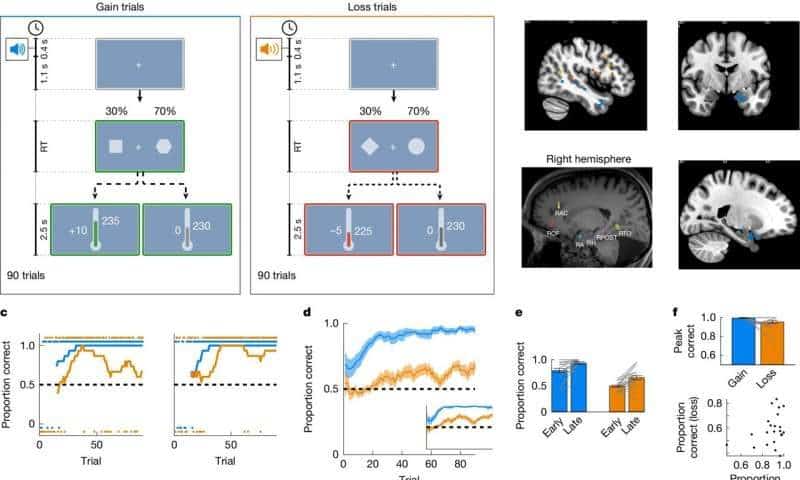Researchers at the Weizmann Institute of Science traced a neural mechanism that explains why humans explore more aggressively when avoiding losses than when pursuing gains. Their work reveals how neuronal firing and noise in the amygdala shape exploratory decision-making.
Human survival has its origins in a delicate balance of exploration versus exploitation. There is safety in exploiting what is known, the local hunting grounds, the favorite foraging location, the go-to deli with the familiar menu. Exploitation also involves the risk of over-reliance on the familiar to the point of becoming too dependent upon it, either through depletion or a change in the stability of local resources.
Exploring the world in the hope of discovering better options has its own set of risks and rewards. There is the chance of finding plentiful hunting grounds, alternative foraging resources, or a new deli that offers a fresh take on old favorites. And there is the risk that new hunting grounds will be scarce, the newly foraged berries poisonous, or that the meal time will be ruined by a deli that disappoints.
Exploration-exploitation (EE) dilemma research has concentrated on gain-seeking contexts, identifying exploration-related activity in surface brain areas like cortex and in deeper regions such as the amygdala. Exploration tends to rise when people feel unsure about which option will pay off.
Loss-avoidance strategies differ from gain-seeking strategies, with links to negative outcomes such as PTSD, anxiety and mood disorders.
In the study, “Rate and noise in human amygdala drive increased exploration in aversive learning,” published in Nature, researchers recorded single-unit activity to compare exploration during gain versus loss learning.
Seventeen epilepsy patients already implanted with clinical depth electrodes took part. Recordings captured 382 neurons across 22 sessions, mainly in the amygdala and nearby temporal cortex.
Participants played a two-choice game with intermixed trial types. A tone signaled a gain or a loss trial. Each trial showed two geometric shapes with different chances of an outcome, 70% vs. 30%. Gain trials yielded scored +10 or 0, while loss trials yielded −5 or 0.
Researchers examined how strongly neurons fired just before each choice and how variable that activity was across trials. Variability served as “neural noise.” Computational models estimated how closely choices followed expected value and how much they reflected overall uncertainty.
Results showed more exploration in loss trials than in gain trials. After people learned which option was better, exploration stayed higher in loss trials and accuracy fell more from its peak.
Pre-choice firing in the amygdala and temporal cortex rose before exploratory choices in both gain and loss, indicating a shared, valence-independent rate signal. Loss trials also showed noisier amygdala activity from cue to choice.
More noise was linked to higher uncertainty and a higher chance of exploring, and noise declined as learning progressed. Using the measured noise levels in decision models reproduced the extra exploration seen in loss trials. Loss aversion did not explain the gap.
Researchers report two neural signals that shape exploration. A valence-independent firing-rate increase in the amygdala and temporal cortex precedes exploratory choices in both gain and loss. A loss-specific rise in amygdala noise raises the odds of exploration under potential loss, scales with uncertainty, and wanes as learning accrues.
Behavioral modeling matches this pattern, with value-only rules fitting gain choices and value-plus-total-uncertainty rules fitting loss choices. Findings point to neural variability as a lever that tilts strategy toward more trial-and-error when loss looms, while causal tests that manipulate noise remain to be done.
From an evolutionary survival perspective, the strategy fits well with the need to seek out new resources when facing the loss of safe or familiar choices. While one might consider trying a new restaurant at any time, true seeking behavior will become a priority if the favorite location is closed for remodeling.

